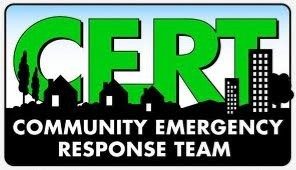Community Training
Who are CERT Students?
- School Administrators
- Public Agency Workers
- Church Members
- Homeowners Association
- City Employees
- Business and Industry
- Community Groups
- Concerned Citizens
What Will I Learn?
Upon completion of CERT training, you will be able to:
- Describe the types of hazards that are most likely to affect your home and community
- Take steps to prepare yourself for a disaster
- Identify and reduce potential fire hazards in your home or workplace
- Conduct triage under simulated disaster conditions
- Perform head-to-toe patient assessment
- Employ basic treatments for various wounds, and apply splints to suspected fractures and sprains
- Describe ways to protect rescuers during light search and rescue operation
| UNIT 1: Disaster Preparedness |
|
| UNIT 2: Disaster Fire Suppression |
|
| UNIT 3: Disaster Medical Operations I |
|
| UNIT 4: Disaster Medical Operations II |
|
| UNIT 5: Light Search and Rescue |
|
| UNIT 6: Disaster Psychology and Organization |
|
| UNIT 7: Terrorism |
|
| UNIT 8: Course Review and Simulation |
|
CERT Participants Manual is available for free to download at:
https://www.ready.gov/sites/default/files/2019.CERT_.Basic_.PM_FINAL_508c.pdf
Book may be ordered from Amazon at:
